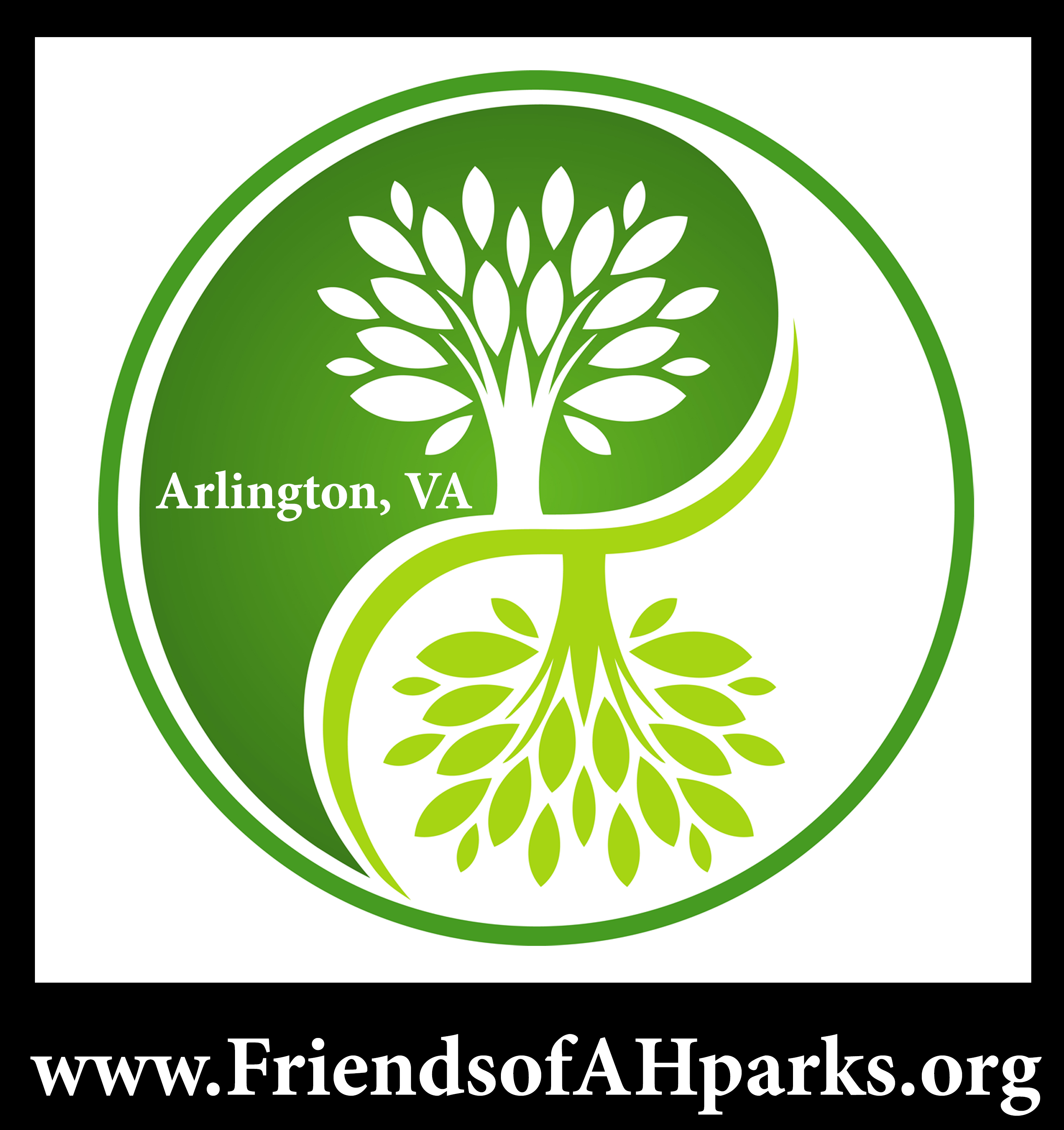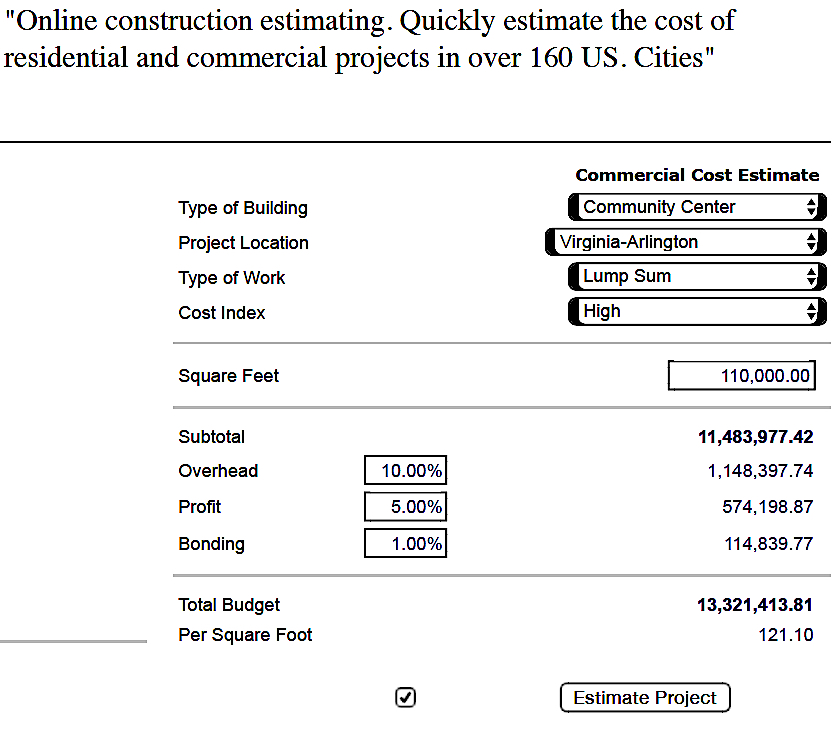The below letter has been approved by the author for publication on the Friends of Aurora Highlands website and social media.
July 17, 2017
Dear Chair Fisette and members of the Arlington County Board:
For the reasons outlined below, I respectfully request that you defer taking action on item 52 (Lubber Run Community Center – Endorsement of the Conceptual Design) on the County Board’s July 18, 2017, meeting agenda. Due to work commitments, I may be unable to comments in person on Tues. I ask that these comments (including attachments) be added to the public record for this item.
Whereas I welcome the very modest reduction in building footprint and other changes that staff released at 4:20 pm on Friday, the fact remains that “If the Board endorses the final design concept, the building layout and massing remain fixed.“—per the staff report.
Staff’s July 14 listserv message is remarkably free of detail. For example, it fails to mention any reduction in the number of trees (previously reported: 124) that are to be removed. Without more detail, it is impossible to know whether staff’s changes will result in any consequential reduction in the environmental harm to the site.
Essentially, the public is being denied an opportunity to provide meaningful feedback on the design even though significant issues remain. Here are my concerns: 1) flawed process, 2) environmental impact and 3) cost.
Process Issues
Staff also appears to have ignored a request from the Public Facilities Review Committee. Below is an excerpt from a PFRC 5-16-17 letter (attached):
Notification for PFRC meetings should be distributed to the larger Lubber Run listserv as there is room for public comment at the meeting.
According to a resident who is on the LRCC listserv, he received no announcements of PFRC meetings. And in one instance, staff scheduled an LRCC public meeting that conflicted with a PFRC meeting also being held to review the LRCC project.
Staff’s perception of the community’s feedback on this project continues to be at odds with the public’s perception of what it has asked for. Namely, staff’s open-ended survey encouraged wishful thinking (without providing any reality-driven cost or environmental impact information). Not surprisingly, staff received a wide range of sometimes-conflicting aspirations and desires. However, there was one consistent and clearly expressed theme:
Save the site’s trees and make environmental protection/habitat preservation a priority.
In Appendix A (at the bottom) are comments extracted from the first 13 responses (out of the 66 identified respondents) — a 20% sample — to staff’s survey. They document strong community commitment to preserving natural habitat and environmental conservation on the LRCC site.
This community’s desires are consistent with the countywide survey results reported in the draft Public Spaces Master Plan; see p.58, Figure 17. Arlingtonians are hungry for nature and green space, not more built infrastructure and pavement. Yet, staff consistently chooses pricey, expensive-to-maintain built infrastructure over less expensive, more flexible, environmentally sound and sustainable recreational options.
Surprisingly, neither the PFRC letter nor the Natural Resources Joint Advisory Group letter (attached) was uploaded to the project page or made available as part of staff’s report. Had I not asked about the geotechnical engineering/borings report, it, too, never would have seen the light of day. The public and County Board members deserve to have timely access to all relevant information (whether or not it supports staff’s position) before being asked to make decisions of this magnitude.
Environmental Considerations
I’ve already discussed with the County Manager (message attached), the remarkably similar conditions on the LRCC site to the Ashlawn Elementary School site, where the steep grade, removal of approx. 100 trees and expansive soil disturbance/site re-grading have exacerbated runoff and triggered ongoing stormwater management failures — including erosion and sediment problems that add to water quality and flood risk issues for nearby Four Mile Run.
The E2C2, NRJAG and PFRC letters were consistent in their pleas for tree preservation, habitat conservation and an environmentally sound plan/design, with the PFRC saying:
PFRC members would generally like to receive more information on the trees that would be lost for each of the schemes and generally believes that existing trees and landscape should take precedent over manmade landscape and newly planted trees wherever possible. …
The draft geotechnical engineering (borings) report clearly documents water on the site. Specifically pp. 11–13 go into great detail describing possible remedies for hydrostatic pressure and water around the building’s footings.
Absent from the report is any information about flow tests, which would determine roughly how much water is flowing beneath the site, its speed and direction. Water doesn’t disappear when you place obstructions in its path. It simply goes elsewhere. But when you don’t know how much water there is or where the water is coming from and going to, how can proper choices be made? It’s a bit like a doctor deciding to operate without first taking x-rays or an MRI of the area in question.
Likewise, staff’s remark about the project’s meeting the Chesapeake Bay Preservation Ordinance and the Stormwater Management Ordinance rings with irony. As we have all seen on the Ashlawn site — where these regulations applied and yet significant environmental degradation resulted — these assurances are meaningless.
Staff appears to take the position that if something isn’t prohibited by law or regulation, then it must be acceptable. This reasoning matches the justifications provided by Martin Shkreli for price-gouging lifesaving medicine and Donald Trump, Jr., for meeting with Russian agents.
Laws and regulations are not substitutes for exercising sound judgment, informed decision-making and employing basic common sense. And I hope that the County Board will hold staff to a higher standard that meets the county’s goals and objectives to protect the environment rather than the low bar of the law.
Cost
The $47.86 million in “total cost” appears to be on the high side. Even accounting for the parking garage by doubling the maximum building square footage to110,000 sq ft, the price tag comes to over $430 per square foot. That is almost 4 times the “high” estimate for constructing a community center in Arlington. VA, using BuildingJournal.com’s online construction-cost estimating tool:
Summary
Given the similar circumstances and undesirable results on the Ashlawn Elementary School site, neither staff nor the County Board can claim ignorance if they permit a repeat on the Lubber Run Community Center site. This time, as I understand it, there won’t even be a use permit to govern what occurs on this site, giving staff a completely free hand. Again, I ask County Board members to defer approval of the project’s design in order to obtain public feedback. I also ask the Board to use the extra time to request that the County Manger come back in September to produce a list of proactive steps staff will take to ensure that the failures on the Ashlawn site are not repeated and that the project and its building’s design are environmentally sound and are consistent with the goals and objectives of Arlington County’s Natural Resources Management Plan (adopted 2014).
Thank you for your time and consideration.
With kind regards,
Suzanne Smith Sundburg
5300 8th Road North
Arlington, Va.
cc: Mark Schwartz, County Manager
Bryna Helfer, Asst. County Manager
Jane Rudolph, Director, DPR
Laura Lazour, DPR/LRCC Project Contact
Aileen Winquist, DES/Stormwater Management & Watersheds
Duke Banks, President, ACCF
Rick Epstein, Co-chairACCF Parks & Rec Committee / Executive Committee member
Michael Thomas, Co-chair ACCF Parks & Rec Committee
John Seymour, Chair, ACCF Environmental Affairs Committee
Scott Brodbeck, Editor, ARLnow.com
Attachments
Appendix A
Quotes from the first 13 respondents, submitted to the county’s survey tool asking about uses of the space surrounding the center: http://www.peakdemocracy.com/portals/105/Issue_2695/survey_responses?filter%5Border_by%5D=Date&page=2&scope=on_forum
Carey Johnston within ¼ mile
The space around the new LRCC can provide areas for nature lessons and engagement.
Additionally, trees on site should be preserved as much as possible. In particular, the cherries (along George Mason and N. Park) and the ‘horizontal tree’ (near the corner of N. 3rd and N. Columbus) should definitely be preserved.
Ron Trueworthy within ¼ mile
I firmly advocate the protection of all green space and would vigorously oppose any encroachment on any park land. There might be a small tot lot outside by the park.… Protect the little green space available….
Name not shown ¼ to ½ mile
Keep with green space at LRCC. People need it for mental well being.
Name not shown ½ to 1 mile
The area surrounding a new Community Center should contain only natural areas with meadows, trees, wildflower plantings and interpretive signage. The area should contain butterfly gardens….
The area surrounding the Community Center should not contain any buildings, paved trails, playgrounds or sport fields. There are many playgrounds and sporting facilities available nearby in Glencarlyn Park, Bluemont Park, Quincy Park and Mosaic Park, some of which have recently displaced natural areas and green space.
The existing sport fields and playing courts at the Community Center are therefore now redundant. They are a very poor use of valuable public open space, which could otherwise contain natural areas….
Name not shown within ¼ mile
Outdoor activity space for all ages, not a formal field as the rolling landscape is a gem of natural land that is well used and loved, from the sideways tree to the trees along George Mason and of course the ancient flowering cherries along Park Drive.
Name not shown 1 to 2 miles
It would make a great location for a small nature center and a place where kids get encouraged to experience nature informally and often.
Kathleen Martin ¼ to ½ mile
Purely recreational–leave as natural as possible with trails and picnic shelters.
NRJAG Letter Lubber Run Community Center (4) (3)
PFRC-LR-Concept-Design-Letter-Final
Sundburg to Schwartz Re 7-15-17 Agenda Items 50 and 52-Lubber Run CC Design Approval
Community Center Construction Cost Estimate – BldgJournal.jpg

